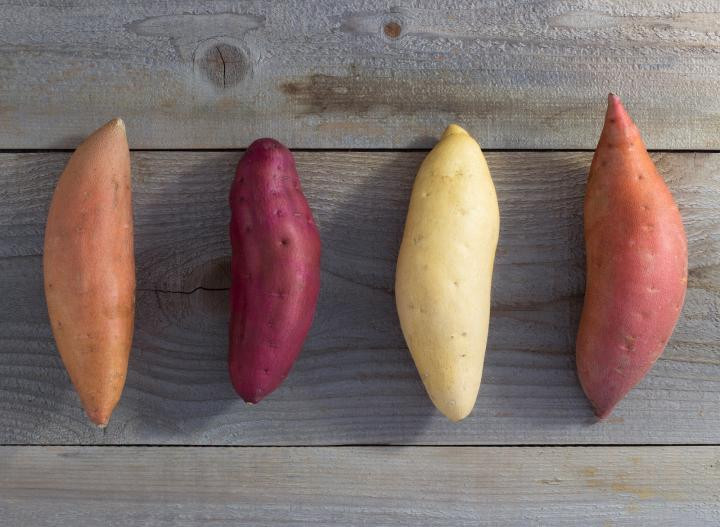
What's the Difference Between Yams and Sweet Potatoes?
ADVERTISEMENT
"We know our Southern readers love their candied yams!"
We like our sweet potatoes (sweet taters) too.....
Felix
New Orleans, LA
Like a famous sailor used to say! " I yam what I yam and that's all that I yam. I'm Popeye the sailor man!! "
In the 1970s and 80s I showed my city kids how to grow sweet potato vines indoors in water. They we're amazed how the vines trailed. Growing sweet potatoes is a rewarding, educational, and beautiful lessons for children to experience.
First, neither one is a "potato"....sweet potatoes are from the Morning Glory family while yams are from the grasses and palms family (hence the rough, dark, bark-like skin). A yam has a darker skin that is rough and almost hairy and is almost cylindrical in shape. A sweet potato has tapered ends with a lighter more delicate skin and either one can have different colored flesh.
Taste:
Yams are starchy, dry, take longer to cook and need more butter (milk, cream, etc.) to make them more palatable.
Sweet potatoes on the other hand are, well....just sweeter, naturally softer, much moister and easier to prepare.
In the end, yams and sweet potato are interchangeable labels thanks to a marketing campaign in the 1930's. It also doesn't help that the FDA has no standard of identity for either one and in supermarkets you will see yam and sweet potato labels interchanged.
Hope this helps.
informative read but disappointing cause.....I STILL can't tell the diff. when I go to the store. I suspect they use the two words interchangably
i like sweet potato good for heath and to eat
Greetings and thank you for your “Sweetpotato” information. I spent 20 years trying to explain and prove to our Office Staff we were not eating Yams. I never really succeeded. That was in the 70s & 80s. I will try finding a few Friends ,to supply them with a copy of your blog. It may help, though being an implanted Yankee , they will not be sure we are correct.
I love The Old Farmers Almanac. Remembering reading it as a child. Gail
I have read a couple of the blog posts on your wietbse since yesterday, and I truly like your way of blogging. I bookmarked it to my bookmark web site list and will be checking back soon. Please visit my site also and let me know your opinion. -3Was this answer helpful?
when is time to dig sweet potatoes that was planted this pass april 13th.the kind was beaurgard
Hi Colon, the variety you planted is 100 days to harvest, so you should be able to count from when you planted to get an accurate harvest date. Otherwise, you can dig up some of the young potatoes now if you wish, but wait to harvest the full crop until just before the first fall frost in your area. Enjoy!











